The inspiring story of how the Munjal family built Hero Honda into the largest two wheeler manufacturer in the world
I was so delighted to read this story published in Rediff.Com that I could not resist posting it on this blog. My apologies to Rediff.Com because I am publishing the full story. Being a two wheeler enthusiast, I had to put this amazing story on this blog of mine.
"This is the story of Brijmohan Lal Munjal, chairman and managing director of Hero Honda Motors"
The story takes us to the time when India got its Independence, which was also the time when the Munjal Family started their business as a bicycle spare parts supplier. The story narrates the hardships and obstacles that the Munjal Family faced in making the Hero Cycles and Hero Honda the largest manufacturer of Bicycles and Motorcycles in the world respectively.

Posted below is the amazing story... Born in a rather nondescript tehsil called Kamalia in Lalpur district of undivided Punjab, the Munjal brothers always looked at life beyond their traditional business of vegetable trading. Brijmohan Lal had barely stepped out of his teens when his older brothers decided to set up their new business -- trading in bicycle components. Managing Editor, The Smart Manager, Gita Piramal explains, "Picture for yourself, India at that moment in time, a country racked by famines and droughts, its industrial machinery devastated by the demands made on it by World War II, no friends in the world, no foreign exchange, no reserves. So, naturally, Nehru and the administration of the time invited entrepreneurs to build the new temples, which would create wealth for the country." Immediately after the launch of Hero Cycles, the youngest of the four brothers Omprakash was given the crucial task of putting a dealer network in place. This was a very significant step that gave Hero Cycles an edge over existing competition like Raleigh and Atlas Cycles. "At a time, when scooters (dominated by Bajaj) had a waiting period of 12 years or even longer, Hero's tie-up with Honda changed it all" Within a span of 6-7 years, production at the Hero Cycles plant doubled and in 1975 it became the largest manufacturer of bicycles in India. In the late 70s, the Indian government was slowly stirred into doling out licenses for Indian companies to venture into mopeds and Brijmohan Lal, who had seen mopeds on the roads in Western countries, quickly snapped up the opportunity. Hero Cycles' two-wheeler business would now reach its next level. "Fill it, shut it, forget it. Slick and unforgettable slogans for a never before kind of launch and a new icon in the two-wheeler industry was born" Two-wheelers in India were then synonymous with scooters and the scooter market was the monopoly of a lone player -- Bajaj Auto Limited. At a time, when scooters had a waiting period of 12 years or even longer, Hero's tie-up with Honda changed it all. Although, it was Munjal's long cherished desire to produce scooters, destiny had other plans. It was a blessing in disguise. Piramal says, "When he died suddenly it was a massive shock for the family. BM Munjal had actually retired by then and the sad man got back into business and set about grooming his younger son, Pawan. Under Pawan's leadership, Hero Honda actually managed to overtake Bajaj Auto." Pawan & Brij Mohan Munjal Related Posts:The forties were turbulent times, but in the midst of all the uncertainty, four young restless brothers in undivided Punjab were marking time for an opportunity to explode upon the Indian corporate scenario. They were the Munjal brothers: Dayanand, Satyanand, Brij and Om.
 This is the story of Brijmohan Lal Munjal, chairman and managing director of Hero Honda Motors.
This is the story of Brijmohan Lal Munjal, chairman and managing director of Hero Honda Motors.
In 1943, unconsciously preempting the inevitable partition of India and its frightening consequences, they decided to shift base from Lahore to Amritsar.
Brijmohan Lal Munjal told CNBC-TV18, "There was nothing available but bicycles on the road. But there was nothing to repair them with. Some artisans in Sialkot, Amritsar and Lahore, started making some components in a very crude way. People like us, our family and another family in Amritsar, started getting those parts from the market, wherever we could get some imported parts and bring it to those artisans. We gave them some money to start making these parts."
Four years after the business shifted to Amritsar, a sudden turn of events hit the Munjals very hard. India was now a free country and the turbulent political climate in Amritsar frightened them into putting the brakes on the fledgling bicycle components business. The Munjals had little choice but to shift base yet again -- this time to Ludhiana.
Munjal recalls, "In Ludhiana, there is this community called Ramgarhias. They are born artisans. There they had already started manufacturing certain parts and when some people like us, who had the capability of bringing them the samples and the possibility of selling them -- it became a very beautiful combination -- their technology and our commercial strength."
India's independence brought with it a new determination: one of self-reliance. The entire nation was on the move and the Munjals would provide the wheels for it.
"Many entrepreneurs took the opportunity, amongst them were bicycle makers, bicycles were in big demand at that time. . . groups like the Birlas with Hind Cycles, TI in the south, they all jumped on to this bandwagon. The Munjals were one of them, in fact, they knew the business better than most and their centre of operation would be Ludhiana."
Ludhiana in the early 1950s was the melting pot of pathbreaking business ideas, a place steaming with entrepreneurs. This one sleepy little town evolved into a buzzing business hub and captured the spirit of an emerging new India.
This was just the right place for young entrepreneurs like Munjals to pump their bicycle components manufacturing business to greater heights, but as always, wheels turned within wheels.
Those were difficult times and it didn't turn out as easy for the brothers to take off as they had anticipated. There were plenty of challenges, the foremost among which was to procure a manufacturing licence.
Munjal recalls: "Manubhai Shah was the industry and commence minister between 1950 and 1954. He somehow got convinced that if you have to get these people settled and provide them with employment, then you have to allow people to manufacture something, allow people to import something. He created the National Small Industries Corporation, NSIC. "
"A Ford Foundation team had come from the United States to advise and guide because at that time, everything was so fluid, nobody knew where to go. I had to travel along with them to Madras (now Chennai), Bangalore and several places. They made a blueprint for the NSIC."
What set the Munjal brothers apart from their contemporaries was their gumption and the ability to swing tides in their favour. While, government regulations may have stifled their growth, Brijmohan Lal started travelling across the length and breadth of India, scouting for new possibilities.
It was during one such trip that he got the idea to manufacture bicycles. Fortuitously, this time, the government would give him the much-needed encouragement and the thrust that he needed to scale up.
While the brothers worked hard to sell their stuff, Brijmohan Lal straddled the globe to source world-class components and machines. In 1959, he made his first trip beyond Indian shores to Germany -- again a move that would leave this competition miles behind.
Munjal recalls, "I went first to Germany for some years and then to Japan and I started bringing in the modern equipment for manufacturing bicycle components. I think I can claim that I took bicycle making to a different level than it was being done then. Germany, at that time, was really bagging business. I bought a complete chain-making plant for Rs 3 lakh (Rs 300,000)."
While Brijmohan Lal travelled across the world to explore new opportunities, his brothers concentrated on consolidating the business and just when it seemed that the good times had finally arrived; tragedy struck.
While Hero Cycles was trying to find a foothold in the industry and had almost got even with its competition - a tragedy hit the Munjals. In 1968, the eldest of the Munjals brothers, Dayanand, died. He was the omnipresent father figure who had guided and protected his brothers from all the evils of the big bad world of business. This loss left a vacuum that would be very difficult to fill.
Dayanand's sudden demise came as a huge blow for the Munjals, but the brothers were determined not to let his dreams die. The Munjals bounced back from the tragedy with a more focussed look at their long-term expansion strategy.
By 1971, the Munjals had set up a rim-making division for Hero Cycles and launched another company called Highway Cycles that would make freewheels -- it was then that Brijmohan Lal restructured and streamlined Heros rapidly expanding business.
But to start manufacturing mopeds, Hero Cycles would need a partner. Munjals approached a French two-wheeler giant Peugeot for a tie-up, but in spite of drawing initial interest, the dream ticket eluded the Munjals. The talks broke down and Hero went on to make its own mopeds modeled on the Peugeot machine but designed in India and it was called Majestic Auto.
By 1983, Majestic Auto had captured almost 35% of the Indian moped market.
The ambitious drive of the 70s culminated on a high note in 1979. The company had just reached the production mark of 1 million bicycles. In that same year, Hero ventured into unknown business territories.
Piramal explains, "In the 1950s, there were just four Munjal brothers in the business. At the turn of the 21st century, there were 21 active members. BM Munjal's handling of the situation is perhaps a classic illustration of how to manage growth and a growing family."
"He worked on two premises; first that all four brothers, the original four brothers, had an equal stake in all the Munjal companies. The second premise was that any Munjal who wanted to work, had to have a business to run. Now what did that mean? That meant that between the 1980s, 1990s and 2000, the business began to expand and to diversify -- they went into textile spinning, they went into financial services. . . although not all of these succeeded."
She adds, "They had also integrated vertically right up to a cold-rolling steel mill. But the biggest and the most important factor in all this was their continuous growth in the auto components' segment, and this would become perhaps the Munjal's key competitive strength."
After the curtain raiser of the 70s and the successful launch of Munjal Casting in 1981, the stage had been set for a quantum leap that would take India's corporate world by surprise -- in fact, they might never know what hit them, until it was too late.
With an enviable slew of successes behind them, the Hero Group emerged a bigger, bolder player in the world of two-wheelers in the early 80s. The first mega milestone of the decade was the decision to join hands with the Japanese automobile giant, Honda. And thus Hero Honda was born. Overnight, it redefined the rules of the game in the two-wheeler industry.
India's preferred vehicle, scooters, would amazingly be relegated into oblivion. India had wanted to break free and choked by the malaise of the Licence Raj, it craved for more choices and the sleek motorcycles that rolled out of the Hero Honda assembly line, were just such a welcome sight.
But just when things were looking promising for the new joint venture, the clouds of misfortune had gathered over Punjab and cast an ominous shadow over Hero Honda. This time an unexpected political event would rattle it: Operation Blue Star.
Armoured tanks rolled into the Golden Temple in Amritsar, and in their wake, the country was plunged into a state of unprecedented confusion and cruelty. Sikhism was the target of xenophobia. The Munjals' business based out of Punjab bore the brunt of irrational hatred. For the Munjals, these were difficult times. But Brijmohan Lal Mumnjal was determined not to leave Punjab, not ever, not even after Indira Gandhi's assassination.
Piramal recalls, "The summer of 1984 was a tumultuous period for India and it was a watershed moment for the Munjals in their corporate saga. That month, Indian troops were storming the Golden Temple at Amritsar and on the other hand, the Munjals were inking their pact with Honda to begin motorcycle production in India. A few months later, Hero Honda made its first public offering."
Hero Honda had set up its first assembly line in Dharuhera, Haryana. The Munjals had for the first time, set foot outside Ludhiana to build a manufacturing facility. Thus, the first 100 cc Hero Honda motorcycle came off the assembly line in April 1985 and with it Hero Honda kick started its journey to unimaginable success.
Fill it, shut it, forget it. Slick and unforgettable slogans for a never before kind of launch and a new icon in the two-wheeler industry was born.
The same year that Hero Honda launched its first bike, Hero struck pay dirt with another Japanese collaboration, with Showa to make shock absorbers. The new company was called Munjal Showa. But at the very same time, returns from Hero Honda had the Munjals disturbed. A falling yen-rupee exchange rate suddenly left the Munjals on the losing end. Ironically, fortunes had reversed and with the sale of each bike, the Munjals now actually lost money.
Piramal explains, "The yen was rising and they were actually losing money on every bike. Honda on the other hand, wanted the components sourced from Japan. They were not sure of the quality and they insisted on it." Behind this, also lay the fact that who is going to make how much money -- will it be Honda or will it be the Munjal Group companies, which made the components. It was a delicate balancing act, a transfer of pricing gain.
But good times were right around the corner and soon enough the Munjals got a pleasant surprise. After three decades of non-stop rigour, Hero Cycles emerged right on top of the pile, not just in India, but also in the world, as the largest bicycle manufacturer. The seal of approval came from none other than the Guinness Book of World Records.
Piramal says, "When the Guinness Book of World Recordssent out a press release that Hero Cycles was the world's biggest single bicycle maker, it really came as a bolt from the blue and it became a source of pride. There were very few world class companies in India at the time, and this became like a beacon of hope - that it was possible for Indian companies to be world class."
Despite the hassles that came with it, the 80s were eventful for the Munjals -- with new partnerships, new milestones and new horizons.
In the 90s, Hero Honda had already emerged as the number one manufacturer in India and compelled competitors like Bajaj Auto to reinvent their strategy from scooters to motorcycles. The rupee yen exchange had taken a healthy turn. In 1990, Hero Honda Motors made Rs 1,000 for every bike it sold and that lead to an annual profit of $10 million. But silver clouds are often followed by dark ones.
Raman Kant Munjal, Brijmohan's elder son, who had shouldered the responsibility of setting up Hero Honda and had been instrumental in translating his father Brijmohan Lal's dream into reality, died quite suddenly in June 1991.
One personal loss after the another hit Brijmohan Lal Munjal. First his mentor -- elder brother Dayanand -- and then his son Raman Kant passed away, but neither political unrest nor personal losses shook his determination; he was made of sterner stuff.
Putting these tragedies behind him, Brijmohan moved on with Hero's expansion plans. In the first lap of the 90s, the group diversified its portfolio. In 1991, it set-up Hero Honda Finlease to finance its customers. Two years later, in 1993, the Group launched Hero Exports, which emerged as India's largest exporter of two-wheelers.
And a year later, the Japanese firm reaffirmed its partnership with Hero for the next ten years, and Hero Honda drove all the way, laughing into a brand-new sunrise.
This time, Honda finally allowed Hero to move into a domain that was until then, the absolute monopoly of another two-wheeler manufacturer, Kinetic. Hero now got the nod from Honda to manufacture scooters with Honda's technology, but for the Munjals the offer came just a wee bit too late.
Hero Honda Motors CEO Pawan Munjal says, "We were very focussed on motorcycles, so they decided to set up a separate company -- a subsidiary of theirs and we decided they would make scooters and we would make motorcycles for the first couple of years. Thereafter, both of us would be free to make all kinds of two-wheelers."
Piramal says, "Though outwardly, the partners presented an amicable front. . . that everything is hunky-dory. . . below the surface there were many tensions. Some of these tensions were, for instance, which model should be introduced in the second round, actually delayed the building of the Gurgaon plant. It's a beautiful plant, spanking new, well laid out and spotless but because of these underlying tensions, growth got stymied so much so that, Bajaj Auto once again took the leadership. It brought out its four-stoke engine and had a very cheeky ad -- 'Kyon Hero?"
The ambition for growth and to break new ground took the Hero Group from one milestone to the next. Hero tehn tied up with the German automobile giant, BMW. It announced its plans to produce the three-series in India. But neither the partnership not the plan worked. The BMW aspiration remained a pie in the sky and left the Munjals poorer but wiser.
Not all dreams come true, not all decisions lead to profit nor all opportunities to success, but in business, what matters is the ability to have the courage to think big. Those who can't, lead nondescript lives but those who dare, become legends. That, in a way, is also the essence of Hero Group's corporate success and by the end of the 90s, they were ready to reap the harvest of the seeds, they had sown on unexplored soil.
Young Turks of the Munjal family had taken over the mantel from the patriarch Brijmohan Munjal. Under them, the Hero Group diversified into IT and IT-enabled services and Hero Honda emerged as the market leader with sales of over a million motorcycles. In 2002, Hero Cycles tied up with National Bicycle Industries, a part of the Matsushita Group to manufacture high-end bicycles.
The same year, they launched Easy Bills to offer utility bill collection and retail services and then in 2004, they went ahead with a tie-up that would make all the difference to the Hero Group's portfolio. But with this Hero had a little lesson to learn.
In 2004, Hero Motors tied up with Aprilia Scooters of Italy. They also worked out an export channel to European market for its two-wheelers and two-wheeler engine through Aprilia. But the demand for two-wheelers in India was only a functional one and they were trying too hard to position high-end motorcycles in the consumer mindspace that couldn't comprehend the need for them.
The Aprilia bubble burst but there was still reason to sell it. The Munjals had, with their ambition of making scooters, finally entered the market with the launch of its 100 cc Pleasure in 2006.
Piramal explains, "The Munjals knew, by this time, that they could not forever hang on to Honda Scooters. Right in the beginning, they had been disappointed that they wanted to make scooters but had not been allowed to. Of course, the motorcycle business today is much larger than scooters. Then when Honda thought that it would bring cars to India, they did not come to the Munjals, they went to the Shrirams. All this, gave the Munjals food for thought."
Despite a long drawn track record of multiple tie-ups and expansion, the Hero Group has always relied on technologies developed by international companies. A strategy that has held the Munjals in good stead for 50 years in this business.
So, from the bylanes of Ludhiana to the highways of international renown, 83-year-old Brijmohan Munjal is steady in his dedication towards his work. He built it all with his hard work, nurtured his dreams and fulfilled tehm.
With the widespread network of 5,000 dealers across the country, the Hero Group today is a conglomerate with an annual turnover of Rs 10,000 crore. Highs and lows, rewards and backlashes have all been a part of the Hero Group's corporate story, but downfalls didn't discourage them, nor did losses kill their spirit of entrepreneurship.
Disclaimer:
This is to remind that the Views or Opinions in the blog are entirely mine unless explicitly stated. The Views and Opinions published in this blog should in no way be related to any other person or organization associated -- directly or indirectly -- with me.
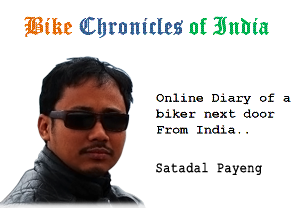
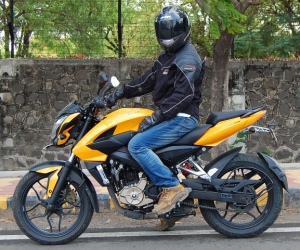




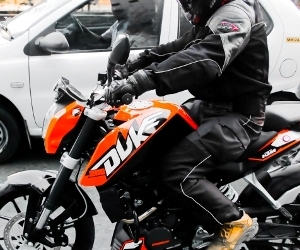


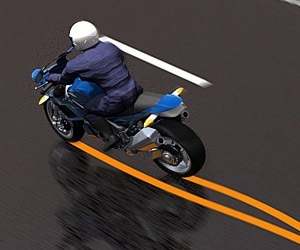
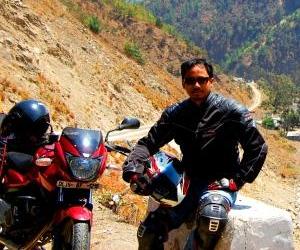

1 Comments:
Very inspiring..read it again today!!
Hats off munjal's...excellent...they made India and Indians proud!
Post a Comment
Your Comments are valuable as they keep the conversation alive..
But Please Comment Responsibly (for them to be published)